 The Bald eagle is a large bird of prey found in North America. Its range includes most of Canada and Alaska, all of the contiguous United States, and northern Mexico. It is found near large bodies of open water with an abundant food supply and old-growth trees for nesting. Bald eagles in northern regions will migrate south for the winter. The Bald eagle is one of the largest true raptors in North America. The only larger species of raptor-like bird is the California condor, a New World vulture. The Golden eagle is of similar size to the Bald eagle. 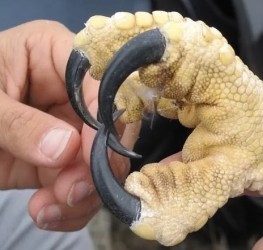 The Bald eagle has a body length of up to one metre, with a wingspan of about two metres and a mass between 3 and 6.3 kilograms. Alaskan eagles are slightly larger. The sexes are identical in plumage, but females are about 25 percent larger than males.
The Bald eagle has a body length of up to one metre, with a wingspan of about two metres and a mass between 3 and 6.3 kilograms. Alaskan eagles are slightly larger. The sexes are identical in plumage, but females are about 25 percent larger than males. The yellow beak is large and hooked. The legs are feather-free, and the toes are short and powerful, with large talons. The highly developed talon of the hind toe is used to pierce the vital areas of prey while it is held immobile by the front toes. 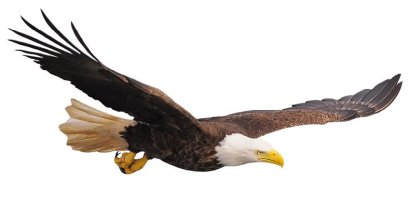 The Bald eagle is a powerful flier, and soars on thermal convection currents. It reaches speeds of 70 km/h when gliding and flapping, and about 48 km/h while carrying fish. Its dive speed is between 120–160 km/h, though it seldom dives vertically. Bald eagles can fly with fish at least equal to their own weight, but if the fish is too heavy to lift, the eagle may be dragged into the water. The Bald eagle is a powerful flier, and soars on thermal convection currents. It reaches speeds of 70 km/h when gliding and flapping, and about 48 km/h while carrying fish. Its dive speed is between 120–160 km/h, though it seldom dives vertically. Bald eagles can fly with fish at least equal to their own weight, but if the fish is too heavy to lift, the eagle may be dragged into the water. Bald eagles can swim, but in some cases, they drag their catch ashore with their talons. The Bald eagle is surprisingly maneuverable in flight. Bald eagles have also been recorded catching up to and then swooping under geese in flight, turning over and thrusting their talons into the other bird's breast. 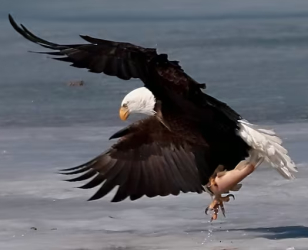 The Bald eagle is an opportunistic feeder that subsists mainly on fish, which it snatches from the water with its talons. It also hunts and consumes birds, especially waterbirds, small mammals and other animals. I have witnessed a Bald eagle eating roadkill.
The Bald eagle is an opportunistic feeder that subsists mainly on fish, which it snatches from the water with its talons. It also hunts and consumes birds, especially waterbirds, small mammals and other animals. I have witnessed a Bald eagle eating roadkill. Occasionally, Bald eagles may hunt cooperatively when confronting prey, especially relatively large prey such as jackrabbits or herons, with one bird distracting potential prey, while the other comes behind it in order to ambush it. The Bald eagle builds the largest nest of any North American bird and the largest tree nests ever recorded for any animal species, up to 4 m deep, and weighing 1 metric ton. Sexual maturity is attained at the age of four to five years. 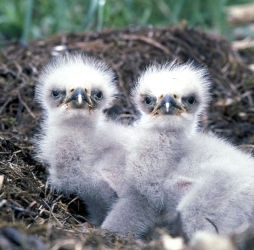
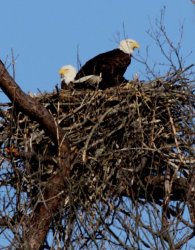 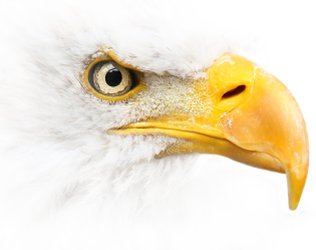  |